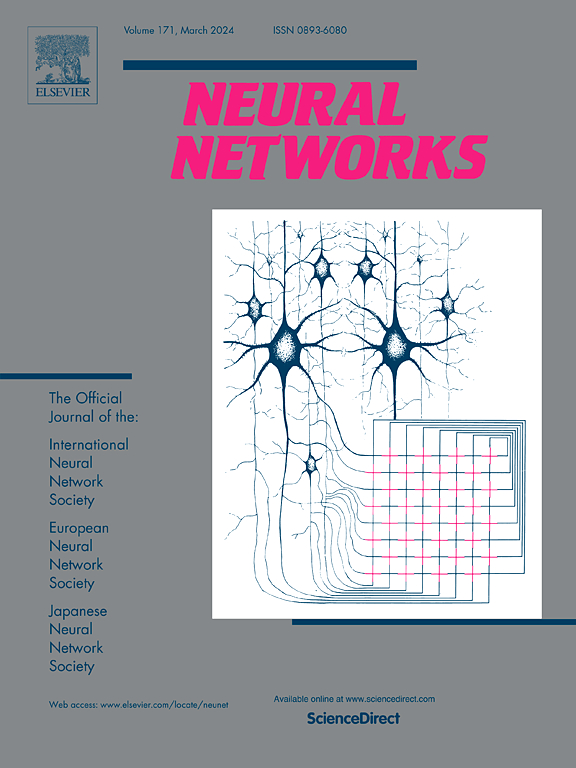TD-HCN: A trend-driven hypergraph convolutional network for stock return prediction
IF 6
1区 计算机科学
Q1 COMPUTER SCIENCE, ARTIFICIAL INTELLIGENCE
引用次数: 0
Abstract
Stock data analysis has become one of the most challenging tasks in time series data analysis due to its dynamism, complexity, and nonlinearity. Recently, relational graphs have become popular for describing certain important relationships in data, particularly by mapping indirect and direct relationships between stocks into non-Euclidean spaces. Existing graph-based methods mainly capture simple pairwise and static relationships between stocks, so they cannot effectively identify higher-order relationships and characterize the dynamic trends of stock relationships. This limitation restricts the performance of stock return prediction models. A variety of stock data types reveal complex relationships among stocks, such as stock prices, industry links, and wiki relationships. This paper proposes a novel Trend-Driven Hypergraph Convolutional Network (TD-HCN) that integrates these data types in order to predict stock rankings through a cooperative learning method of local dynamic and global static relationships across temporal dimensions. To be concrete, we employ a Prior-constrained Relational Learning (PCRL) model that leverages explicit prior knowledge to guide the discovery of latent high-order relationships among stocks. In order to comprehensively capture and utilize dynamic trends in relationships among stocks, a Disentanglement Representation Learning (DRL) mechanism is developed to enhance the key trend features through the disentanglement operation and dual attention module. Extensive experiments on NASDAQ and NYSE datasets show that TD-HCN consistently outperforms the state-of-the-art methods by a considerable margin in terms of returns. It is also effective and robust in learning the dynamic relationships among stocks and capturing key changes in trends within those relationships.
基于趋势驱动的超图卷积网络的股票收益预测
股票数据分析由于其动态性、复杂性和非线性特性,已成为时间序列数据分析中最具挑战性的任务之一。最近,关系图在描述数据中的某些重要关系方面变得很流行,特别是通过将股票之间的间接和直接关系映射到非欧几里得空间中。现有的基于图的方法主要捕获股票之间简单的两两和静态关系,无法有效识别高阶关系和表征股票关系的动态趋势。这一限制限制了股票收益预测模型的性能。各种股票数据类型揭示了股票之间的复杂关系,例如股票价格、行业链接和wiki关系。本文提出了一种新的趋势驱动超图卷积网络(TD-HCN),该网络集成了这些数据类型,通过跨时间维度的局部动态和全局静态关系的合作学习方法来预测股票排名。具体而言,我们采用了先验约束关系学习(PCRL)模型,该模型利用显式先验知识来指导发现股票之间潜在的高阶关系。为了全面捕捉和利用种群间关系的动态趋势,提出了一种解纠缠表示学习(DRL)机制,通过解纠缠操作和双注意模块来增强关键趋势特征。在纳斯达克和纽约证券交易所数据集上进行的大量实验表明,TD-HCN在回报方面始终优于最先进的方法。它在学习库存之间的动态关系和捕捉这些关系中趋势的关键变化方面也是有效和可靠的。
本文章由计算机程序翻译,如有差异,请以英文原文为准。
求助全文
约1分钟内获得全文
求助全文
来源期刊

Neural Networks
工程技术-计算机:人工智能
CiteScore
13.90
自引率
7.70%
发文量
425
审稿时长
67 days
期刊介绍:
Neural Networks is a platform that aims to foster an international community of scholars and practitioners interested in neural networks, deep learning, and other approaches to artificial intelligence and machine learning. Our journal invites submissions covering various aspects of neural networks research, from computational neuroscience and cognitive modeling to mathematical analyses and engineering applications. By providing a forum for interdisciplinary discussions between biology and technology, we aim to encourage the development of biologically-inspired artificial intelligence.
 求助内容:
求助内容: 应助结果提醒方式:
应助结果提醒方式:


